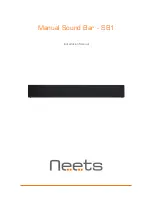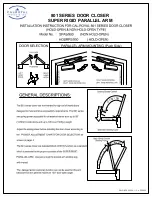
*)
at the interface with the public grid
see "Technical data"
In this case, the plant operator or the person using the device should check whether the
device may be connected, where appropriate by discussing the matter with the power
supply company.
IMPORTANT!
Ensure that the mains connection is earthed properly
Protecting your-
self and others
Anyone working with the device exposes themselves to numerous risks, e.g.
-
flying sparks and hot pieces of metal
-
Arc radiation, which can damage eyes and skin
-
Hazardous electromagnetic fields, which can endanger the lives of those using car-
diac pacemakers
-
Risk of electrocution from mains current and welding current
-
Greater noise pollution
-
Harmful welding fumes and gases
Suitable protective clothing must be worn when working with the device. The protective
clothing must have the following properties:
-
Flame-resistant
-
Insulating and dry
-
Covers the whole body, is undamaged and in good condition
-
Safety helmet
-
Trousers with no turn-ups
Protective clothing refers to a variety of different items. Operators should:
-
Protect eyes and face from UV rays, heat and sparks using a protective visor and
regulation filter
-
Wear regulation protective goggles with side protection behind the protective visor
-
Wear stout footwear that provides insulation even in wet conditions
-
Protect the hands with suitable gloves (electrically insulated and providing protection
against heat)
-
Wear ear protection to reduce the harmful effects of noise and to prevent injury
Keep all persons, especially children, out of the working area while any devices are in
operation or welding is in progress. If, however, there are people in the vicinity:
-
Make them aware of all the dangers (risk of dazzling by the arc, injury from flying
sparks, harmful welding fumes, noise, possible risks from mains current and welding
current, etc.)
-
Provide suitable protective equipment
-
Alternatively, erect suitable safety screens/curtains.
Danger from
toxic gases and
vapours
The fumes produced during welding contain harmful gases and vapours.
Welding fumes contain substances that cause cancer, as stated in Monograph 118 of the
International Agency for Research on Cancer.
Use at-source extraction and a room extraction system.
If necessary, use a welding torch with an integrated extraction device.
Keep your face away from welding fumes and gases.
Fumes and hazardous gases
-
must not be breathed in
-
must be extracted from the working area using appropriate methods.
Ensure an adequate supply of fresh air. Ensure that there is a ventilation rate of at least
20 m³ per hour at all times.
9
EN
Summary of Contents for TPS/i Push
Page 2: ......
Page 20: ...20...
Page 21: ...System configurations 21...
Page 22: ...22...
Page 29: ...System components 29...
Page 30: ...30...
Page 43: ...Controls connections and mechan ical components 43...
Page 44: ...44...
Page 58: ...58...
Page 59: ...Installation conventional robot 59...
Page 60: ...60...
Page 66: ...3 3 Nm 2 43 lb ft 2 6 Nm 4 43 lb ft 3 66...
Page 74: ...2 74...
Page 79: ...WF 15i 30i R 2 WF 25i R 2 WF 25i 30i R L 1 WF 30i R L 2 WF 25i R L 2 79 EN...
Page 83: ...For steel inner liners 5 6 For plastic inner liners 5 6 83 EN...
Page 86: ...86...
Page 87: ...Installation PAP 87...
Page 88: ...88...
Page 91: ...Fitting the wire feed unit Fitting the WF 15i 25i 30i R PAP 1 2 3 4 91 EN...
Page 94: ...3 3 Nm 2 43 lb ft 2 3 Nm 2 21 lb ft 3 94...
Page 105: ...Connecting the interconnecting hosepack 105 EN...
Page 107: ...3 4 107 EN...
Page 108: ...108...
Page 109: ...Start up 109...
Page 110: ...110...
Page 114: ...3 8 6 7 9 3 1 2 2 5 4 4 3 4 5 5 6 1 2 3 4 114...
Page 119: ...Troubleshooting maintenance and disposal 119...
Page 120: ...120...
Page 129: ...5 6 7 8 9 10 129 EN...
Page 130: ...11 Removing the CrashBox PAP from the robot with mounting key 1 2 3 4 130...
Page 131: ...5 6 7 8 1 9 10 131 EN...
Page 134: ...134...
Page 135: ...Technical data 135...
Page 136: ...136...
Page 151: ...151 EN...










































